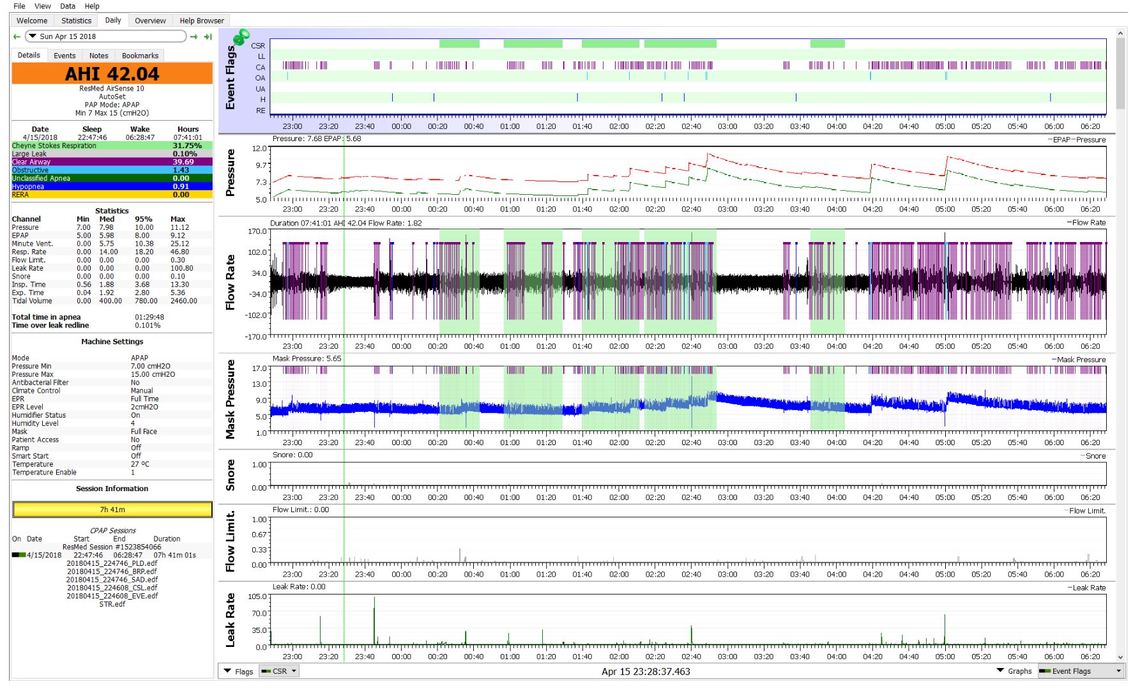That seems high as was pointed out the maximum number of 10 second events would 360 per hour. However I have heard of diagnosis AHI's over 100. It can be obstructive apnea, or it can be central apnea including a special condition called Cheyne Stokes Respiration. This is basically when the control system regulating breathing goes unstable, and it results in back to back CA events. There can be many causes including heart failure or use of drugs such as opioids. This is one example of a situation where one would want to have a full in lab sleep study, as well as an investigation of other potential cardiovascular issues.
Central apnea can be made worse by CPAP treatment. Here is one example of pretty bad Central Apnea while using an APAP. The green highlighted areas are flagged as potential Cheyne Stokes Respiration (CSR).

Maybe I worded it wrong I’ll look into it again but thanks for response
Can the cpap or bipap show if the CA or other apnea’s is being made worsening by the machine? Like where it says AHI?
Machines have a minimum pressure of 4 cm. So there is no way you can monitor the frequency of events without some pressure. Normally one has the sleep study report which has the breakdown of the AHI which is without any pressure. Then if CA incidence goes up on treatment with CPAP, it becomes suspicious that pressure may be causing some of it. During the night when the pressure changes you can look at a SleepyHead report like the one above and determine at what pressure the incidence of CA events are worst and if the frequency goes up as the pressure goes up. The magenta event flags are CA events and the AHI in this example is virtually all CA.
It is somewhat normal for CA to go up somewhat on initiation of CPAP treatment, and in most cases it goes back down again after 6-8 weeks. However, in some it does not go back down, so they have to deal with it. Minimizing pressure is the most direct way. In serious cases an ASV machine may be used instead of a standard CPAP. A BiPap is often tried and it works in some cases but not all.
I don't think it's wrong to question the parameters of an illness if it helps us understand the relevance of the data.
As Sierra implied we only have 3600 seconds in an hour.
Presuming that to exhale and inhale takes 2 seconds that brings us back to a maximum of 300 events per hour.
From what I understand many of us have events that last for 20 seconds and some even 50 seconds or more.
If we rework the numbers on 20 second pauses with a 2 second breath then it reduces to around 160 events per hour.
It's likely that a 2 second breath is not common and most would perhaps manage a few breaths between events and probably breath for the same duration as they pause which, for 20 second events, would bring the number down to 90 events per hour.
I suspect that mild or moderate cases are a slightly different process that results in breathing winding down to a pause every 2 - 10 minutes but being largely sustainable in the interim.
Of course these are only numbers and guesses, and even if by some fluke they might seem to make sense, nothing to do with individual humans is consistent or predictable.